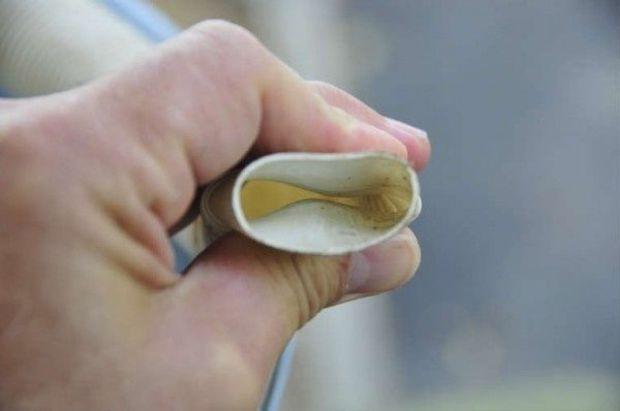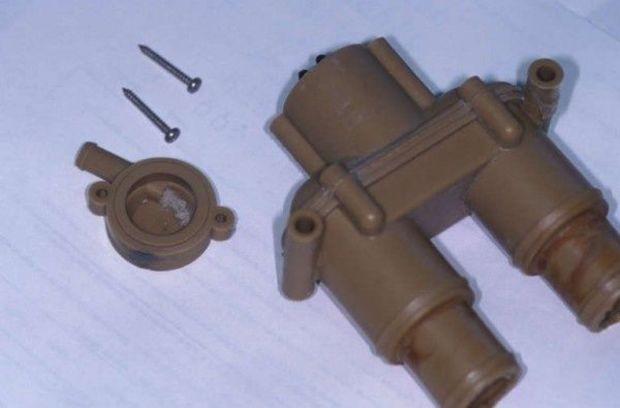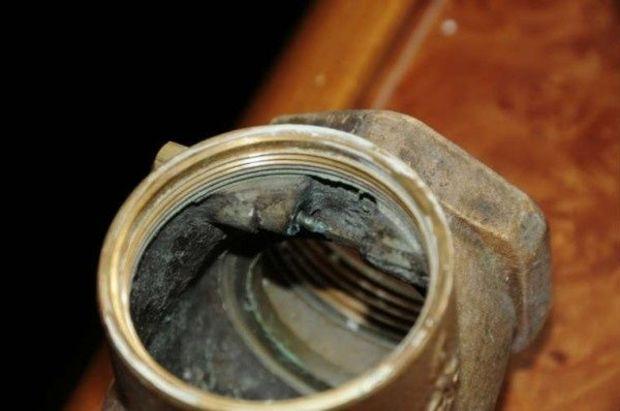There’s a common misconception among many boat owners, one that places far too much trust in the capabilities of the otherwise humble electric bilge pump.
Consider this: a one-inch hole (roughly the size of a transducer penetration), one foot below the waterline, will admit 1200 gallons (over half a ton) per hour. Herein lies the problem: In spite of the lofty ratings found on most pumps, their actual pumping capacity, once ‘head,’ a function of the distance water must be lifted from the bilge, and plumbing resistance are taken into account, is often far lower. In tests I’ve carried out, the output of an average bilge pump installation, which includes a riser and anti-siphon valve, as well as potentially undersized wiring (which also hamstrings pump performance), is often half the pump’s rating.
The upshot of this pump arithmetic is; typical bilge pump installations should not be relied upon to contend with anything but the most minor sort of flooding. That doesn’t mean, however, they couldn’t or shouldn’t be improved. While bilge pumps may not be able to keep up with a torrent, a well-found and properly plumbed system will buy those contending with flooding time to stem or slow the flow.
 Plumbing
Plumbing
Plumbing used for bilge pump systems must be durable, crush- and kink-resistant, and direct and present the lowest possible restriction. The discharge from a pump should never be reduced or paralleled; each pump should utilize its own dedicated overboard discharge fitting. The interior of the hose should be smooth, and hard plumbing fittings, if used, should be kept to a minimum, and unnecessary 90-degree fittings avoided. Where these turns are unavoidable, gentle “sweeps” should be used.
Having said that, some resistance is unavoidable, in that provisions must be made to prevent back-flooding and siphoning; for sailing vessels each pump discharge should be equipped with a riser that is a minimum of two feet above the dynamic or heeled waterline (defined, for sailing vessels, as heeling to the toe rail amidships).
A necessary evil, this riser ensures that water cannot flow back into the vessel, and it’s required for the proper operation of anti-siphon valves (more on these in a moment). The riser and anti-siphon valve must often be installed amidships in order to meet this heeling requirement.
For power vessels, installations are often more lax. Many utilize no riser at all, particularly if the builder believes the discharge can, other than momentarily, never be submerged. Ideally, however, a riser should be installed at some height above the vessel’s heeled waterline, which, for power vessels, is measured when the vessel heels seven percent.

Anti-siphon valves are optional on power vessels provided, once again, there is no chance of the pump’s overboard discharge fitting becoming submerged. While they do add resistance, the ‘better safe than sorry’ axiom applies; if in doubt, an anti-siphon valve should be installed. I’ve encountered power vessels that have flooded through bilge pump plumbing, when heeling only slightly, as a result of an otherwise minor grounding episode.
Valves: Anti-Siphon & Check
Anti-siphon valves, also known as siphon-breaks, are devices that admit air into a plumbing system when a vacuum is present, preventing a siphon from being established. Various valve mechanisms are used by different manufacturers (and most specify the minimum distance they must be installed above the dynamic waterline, some calling for 12 inches, while others call for two feet; the latter is my preference). Some rely on a small spring and rubber ball, others use a diaphragm-type flap, while still others use a duck-bill design. Regardless of which style is employed, all must be accessible because all require periodic, at least annual, inspection, disassembly, and service.
These valves are prone to becoming encrusted with salt and debris, which insidiously prevent them from operating when needed. A pet peeve of mine where builders are concerned, and I have no shortage of these, is their tendency to install anti-siphon valves in inaccessible locations, in the assumption that they require no service. Ideally, new and refit vessels should be provided with bilge pump plumbing schematics, which identify, among other things, the location of each and every anti-siphon valve. It’s not unusual to find (if one searches diligently) a dozen, for various purposes in addition to those used for bilge pumps, aboard a 50- or 60-foot vessel.

In the inspections I carry out, it’s not unusual for me to encounter the use of check valves in bilge pump installations. While I’ll concede there are times where a check valve can be beneficial, their use should by no means be considered ideal or universal. Furthermore, in order to remain American Boat and Yacht Council (ABYC) compliant, check valves must not be used in bilge pump plumbing to prevent siphoning or flooding.
Additionally, check valves are prone to seizing in both opened and closed positions, either of which could be disastrous. If a check valve becomes seized in the open position, down flooding or siphoning can occur; should it become seized in the closed position, a submersible pump will continue to run, agitating the water around it, often leading the casual observer to conclude that the pump is removing water from the bilge, when in fact it’s not. In the aforementioned tests I carried out, a check valve alone can reduce the flow rate of a pump by as much as 50 percent.
As if that’s not reason enough to avoid the use of check valves, they have one more dirty trick up their sleeve. A check valve can make it impossible for a pump to overcome the head pressure of the water it retains in the hose. It gets trickier still. The pump will work the first time it’s tested because the hose is empty. Thereafter, the pump will run; however, it will be unable to open the valve and therefore will not discharge water.

Finally, the only true test of a bilge pump system involves actual removal of water. Conscientious vessel operators should test bilge pumps by controlled flooding of bilges at least annually. In doing so you may be surprised by what you find.
About the Author: With nearly three decades of marine industry experience, former boatyard manager, technical writer, and lecturer, Steve D’Antonio, consults for boat owners and buyers, boat builders, and others in the industry. Find his weekly technical columns at
stevedmarine.com.
 Plumbing
Plumbing used for bilge pump systems must be durable, crush- and kink-resistant, and direct and present the lowest possible restriction. The discharge from a pump should never be reduced or paralleled; each pump should utilize its own dedicated overboard discharge fitting. The interior of the hose should be smooth, and hard plumbing fittings, if used, should be kept to a minimum, and unnecessary 90-degree fittings avoided. Where these turns are unavoidable, gentle “sweeps” should be used.
Having said that, some resistance is unavoidable, in that provisions must be made to prevent back-flooding and siphoning; for sailing vessels each pump discharge should be equipped with a riser that is a minimum of two feet above the dynamic or heeled waterline (defined, for sailing vessels, as heeling to the toe rail amidships).
A necessary evil, this riser ensures that water cannot flow back into the vessel, and it’s required for the proper operation of anti-siphon valves (more on these in a moment). The riser and anti-siphon valve must often be installed amidships in order to meet this heeling requirement.
For power vessels, installations are often more lax. Many utilize no riser at all, particularly if the builder believes the discharge can, other than momentarily, never be submerged. Ideally, however, a riser should be installed at some height above the vessel’s heeled waterline, which, for power vessels, is measured when the vessel heels seven percent.
Plumbing
Plumbing used for bilge pump systems must be durable, crush- and kink-resistant, and direct and present the lowest possible restriction. The discharge from a pump should never be reduced or paralleled; each pump should utilize its own dedicated overboard discharge fitting. The interior of the hose should be smooth, and hard plumbing fittings, if used, should be kept to a minimum, and unnecessary 90-degree fittings avoided. Where these turns are unavoidable, gentle “sweeps” should be used.
Having said that, some resistance is unavoidable, in that provisions must be made to prevent back-flooding and siphoning; for sailing vessels each pump discharge should be equipped with a riser that is a minimum of two feet above the dynamic or heeled waterline (defined, for sailing vessels, as heeling to the toe rail amidships).
A necessary evil, this riser ensures that water cannot flow back into the vessel, and it’s required for the proper operation of anti-siphon valves (more on these in a moment). The riser and anti-siphon valve must often be installed amidships in order to meet this heeling requirement.
For power vessels, installations are often more lax. Many utilize no riser at all, particularly if the builder believes the discharge can, other than momentarily, never be submerged. Ideally, however, a riser should be installed at some height above the vessel’s heeled waterline, which, for power vessels, is measured when the vessel heels seven percent.
 Anti-siphon valves are optional on power vessels provided, once again, there is no chance of the pump’s overboard discharge fitting becoming submerged. While they do add resistance, the ‘better safe than sorry’ axiom applies; if in doubt, an anti-siphon valve should be installed. I’ve encountered power vessels that have flooded through bilge pump plumbing, when heeling only slightly, as a result of an otherwise minor grounding episode.
Valves: Anti-Siphon & Check
Anti-siphon valves, also known as siphon-breaks, are devices that admit air into a plumbing system when a vacuum is present, preventing a siphon from being established. Various valve mechanisms are used by different manufacturers (and most specify the minimum distance they must be installed above the dynamic waterline, some calling for 12 inches, while others call for two feet; the latter is my preference). Some rely on a small spring and rubber ball, others use a diaphragm-type flap, while still others use a duck-bill design. Regardless of which style is employed, all must be accessible because all require periodic, at least annual, inspection, disassembly, and service.
These valves are prone to becoming encrusted with salt and debris, which insidiously prevent them from operating when needed. A pet peeve of mine where builders are concerned, and I have no shortage of these, is their tendency to install anti-siphon valves in inaccessible locations, in the assumption that they require no service. Ideally, new and refit vessels should be provided with bilge pump plumbing schematics, which identify, among other things, the location of each and every anti-siphon valve. It’s not unusual to find (if one searches diligently) a dozen, for various purposes in addition to those used for bilge pumps, aboard a 50- or 60-foot vessel.
Anti-siphon valves are optional on power vessels provided, once again, there is no chance of the pump’s overboard discharge fitting becoming submerged. While they do add resistance, the ‘better safe than sorry’ axiom applies; if in doubt, an anti-siphon valve should be installed. I’ve encountered power vessels that have flooded through bilge pump plumbing, when heeling only slightly, as a result of an otherwise minor grounding episode.
Valves: Anti-Siphon & Check
Anti-siphon valves, also known as siphon-breaks, are devices that admit air into a plumbing system when a vacuum is present, preventing a siphon from being established. Various valve mechanisms are used by different manufacturers (and most specify the minimum distance they must be installed above the dynamic waterline, some calling for 12 inches, while others call for two feet; the latter is my preference). Some rely on a small spring and rubber ball, others use a diaphragm-type flap, while still others use a duck-bill design. Regardless of which style is employed, all must be accessible because all require periodic, at least annual, inspection, disassembly, and service.
These valves are prone to becoming encrusted with salt and debris, which insidiously prevent them from operating when needed. A pet peeve of mine where builders are concerned, and I have no shortage of these, is their tendency to install anti-siphon valves in inaccessible locations, in the assumption that they require no service. Ideally, new and refit vessels should be provided with bilge pump plumbing schematics, which identify, among other things, the location of each and every anti-siphon valve. It’s not unusual to find (if one searches diligently) a dozen, for various purposes in addition to those used for bilge pumps, aboard a 50- or 60-foot vessel.
 In the inspections I carry out, it’s not unusual for me to encounter the use of check valves in bilge pump installations. While I’ll concede there are times where a check valve can be beneficial, their use should by no means be considered ideal or universal. Furthermore, in order to remain American Boat and Yacht Council (ABYC) compliant, check valves must not be used in bilge pump plumbing to prevent siphoning or flooding.
Additionally, check valves are prone to seizing in both opened and closed positions, either of which could be disastrous. If a check valve becomes seized in the open position, down flooding or siphoning can occur; should it become seized in the closed position, a submersible pump will continue to run, agitating the water around it, often leading the casual observer to conclude that the pump is removing water from the bilge, when in fact it’s not. In the aforementioned tests I carried out, a check valve alone can reduce the flow rate of a pump by as much as 50 percent.
As if that’s not reason enough to avoid the use of check valves, they have one more dirty trick up their sleeve. A check valve can make it impossible for a pump to overcome the head pressure of the water it retains in the hose. It gets trickier still. The pump will work the first time it’s tested because the hose is empty. Thereafter, the pump will run; however, it will be unable to open the valve and therefore will not discharge water.
In the inspections I carry out, it’s not unusual for me to encounter the use of check valves in bilge pump installations. While I’ll concede there are times where a check valve can be beneficial, their use should by no means be considered ideal or universal. Furthermore, in order to remain American Boat and Yacht Council (ABYC) compliant, check valves must not be used in bilge pump plumbing to prevent siphoning or flooding.
Additionally, check valves are prone to seizing in both opened and closed positions, either of which could be disastrous. If a check valve becomes seized in the open position, down flooding or siphoning can occur; should it become seized in the closed position, a submersible pump will continue to run, agitating the water around it, often leading the casual observer to conclude that the pump is removing water from the bilge, when in fact it’s not. In the aforementioned tests I carried out, a check valve alone can reduce the flow rate of a pump by as much as 50 percent.
As if that’s not reason enough to avoid the use of check valves, they have one more dirty trick up their sleeve. A check valve can make it impossible for a pump to overcome the head pressure of the water it retains in the hose. It gets trickier still. The pump will work the first time it’s tested because the hose is empty. Thereafter, the pump will run; however, it will be unable to open the valve and therefore will not discharge water.
 Finally, the only true test of a bilge pump system involves actual removal of water. Conscientious vessel operators should test bilge pumps by controlled flooding of bilges at least annually. In doing so you may be surprised by what you find.
About the Author: With nearly three decades of marine industry experience, former boatyard manager, technical writer, and lecturer, Steve D’Antonio, consults for boat owners and buyers, boat builders, and others in the industry. Find his weekly technical columns at stevedmarine.com.
Finally, the only true test of a bilge pump system involves actual removal of water. Conscientious vessel operators should test bilge pumps by controlled flooding of bilges at least annually. In doing so you may be surprised by what you find.
About the Author: With nearly three decades of marine industry experience, former boatyard manager, technical writer, and lecturer, Steve D’Antonio, consults for boat owners and buyers, boat builders, and others in the industry. Find his weekly technical columns at stevedmarine.com.